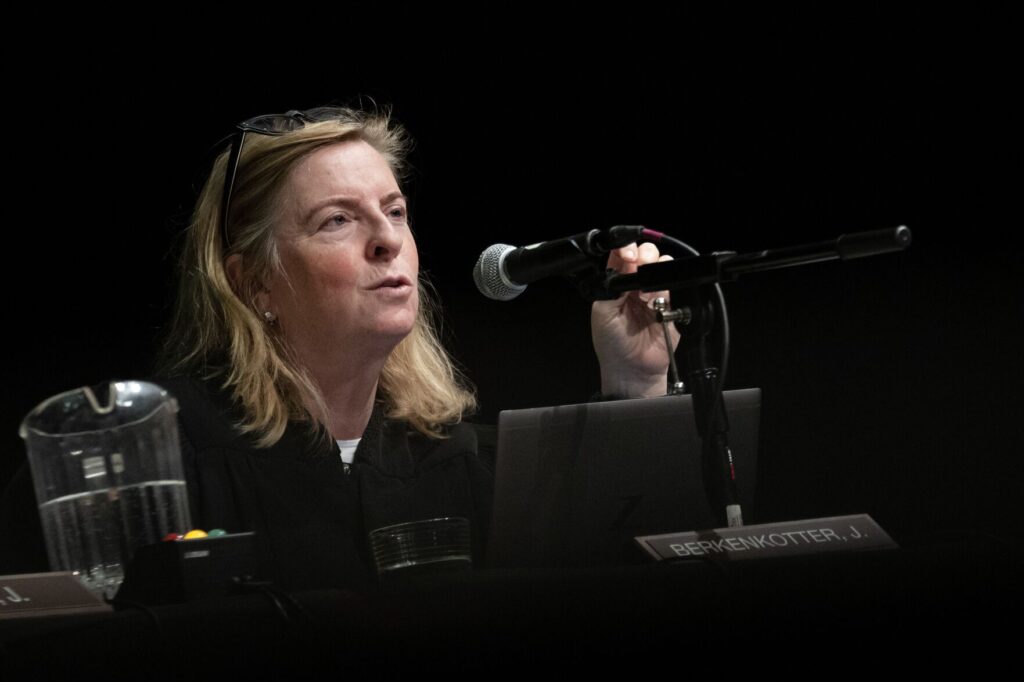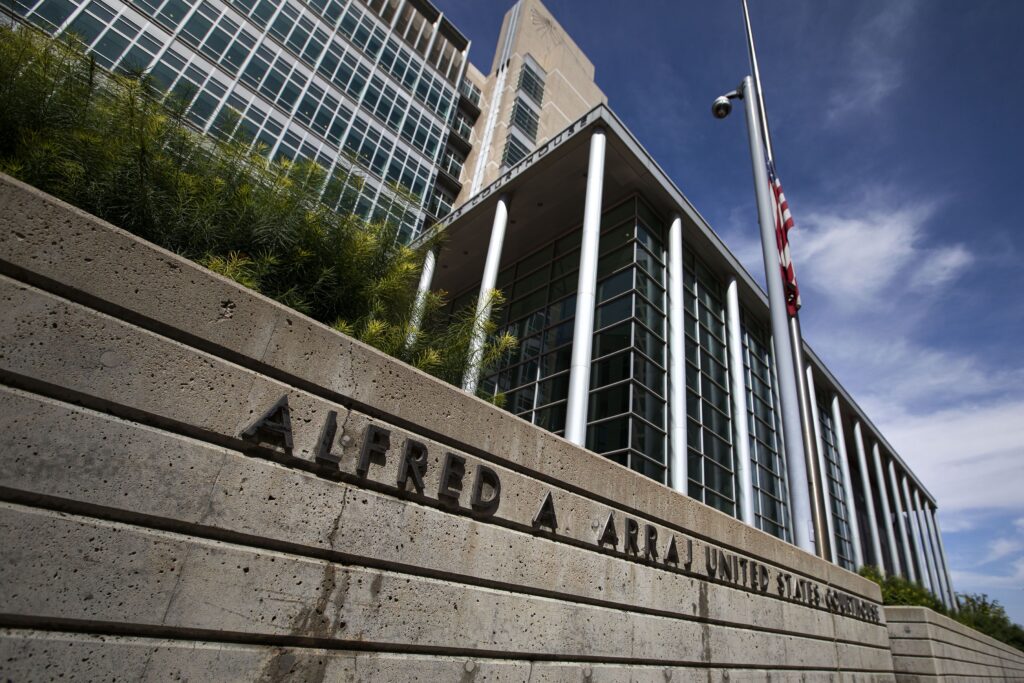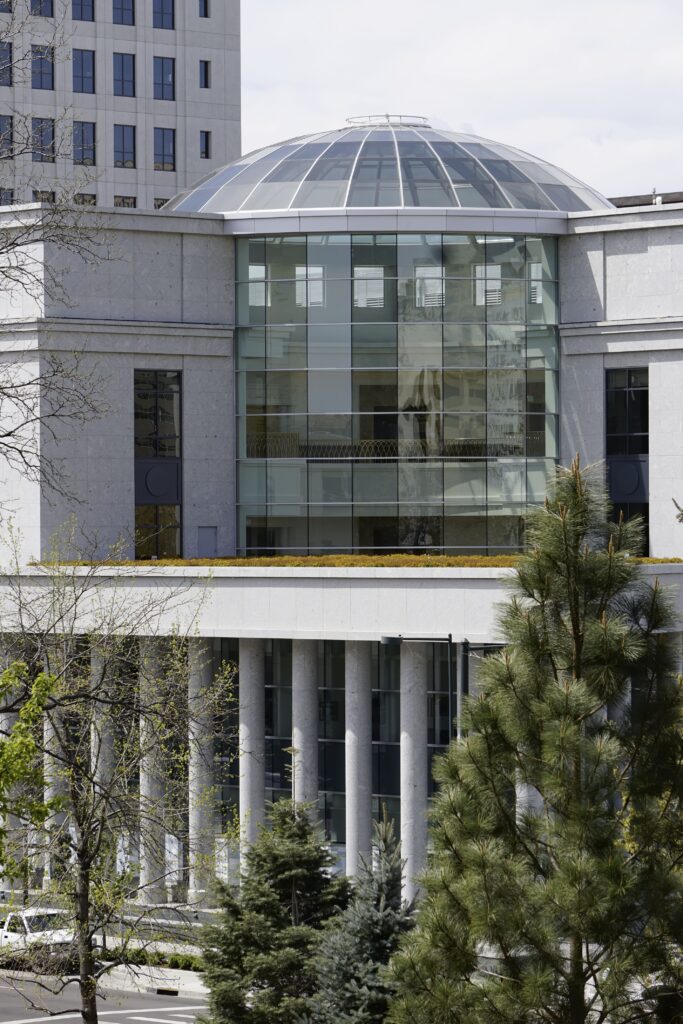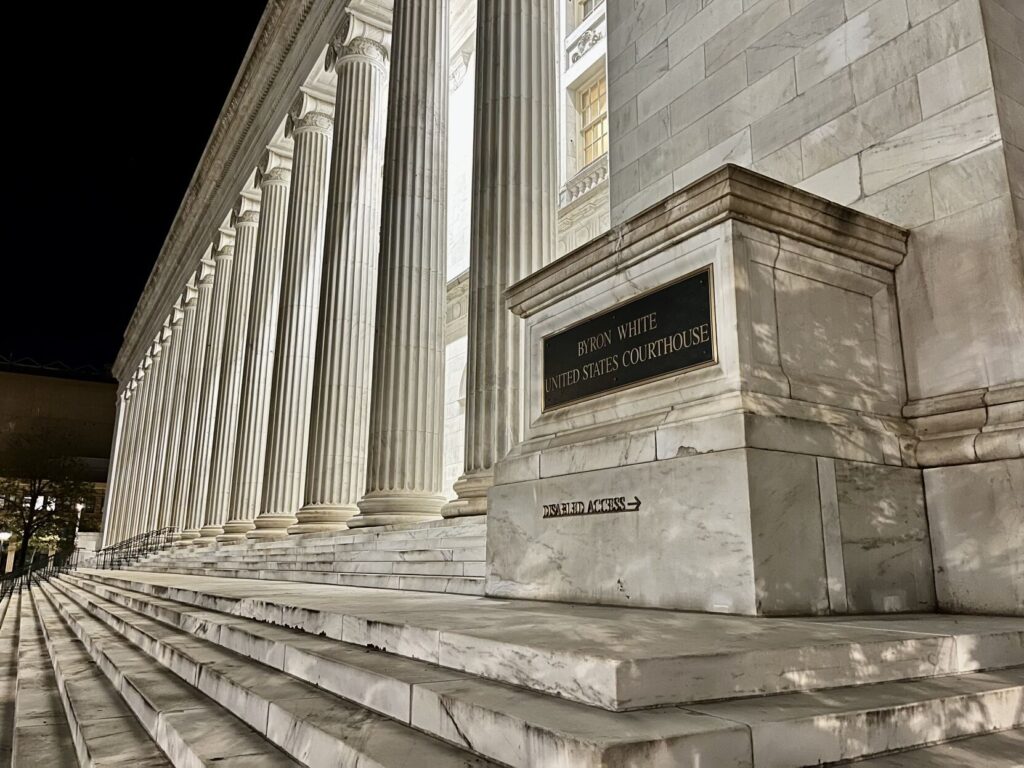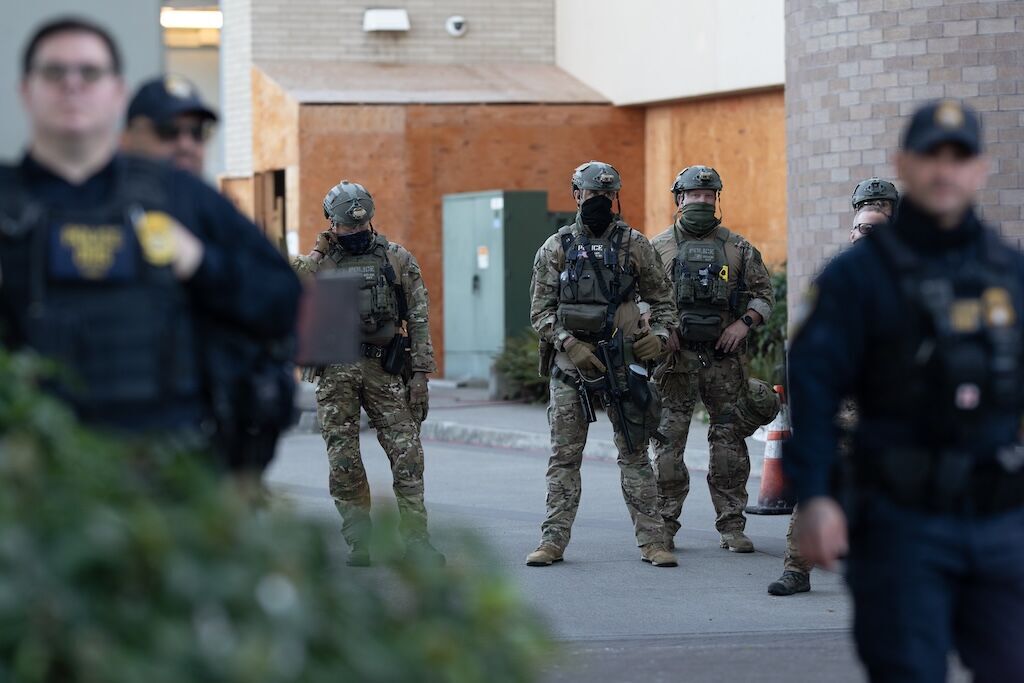2 federal judges provide rare glimpse into lawyers’ reviews of their performance
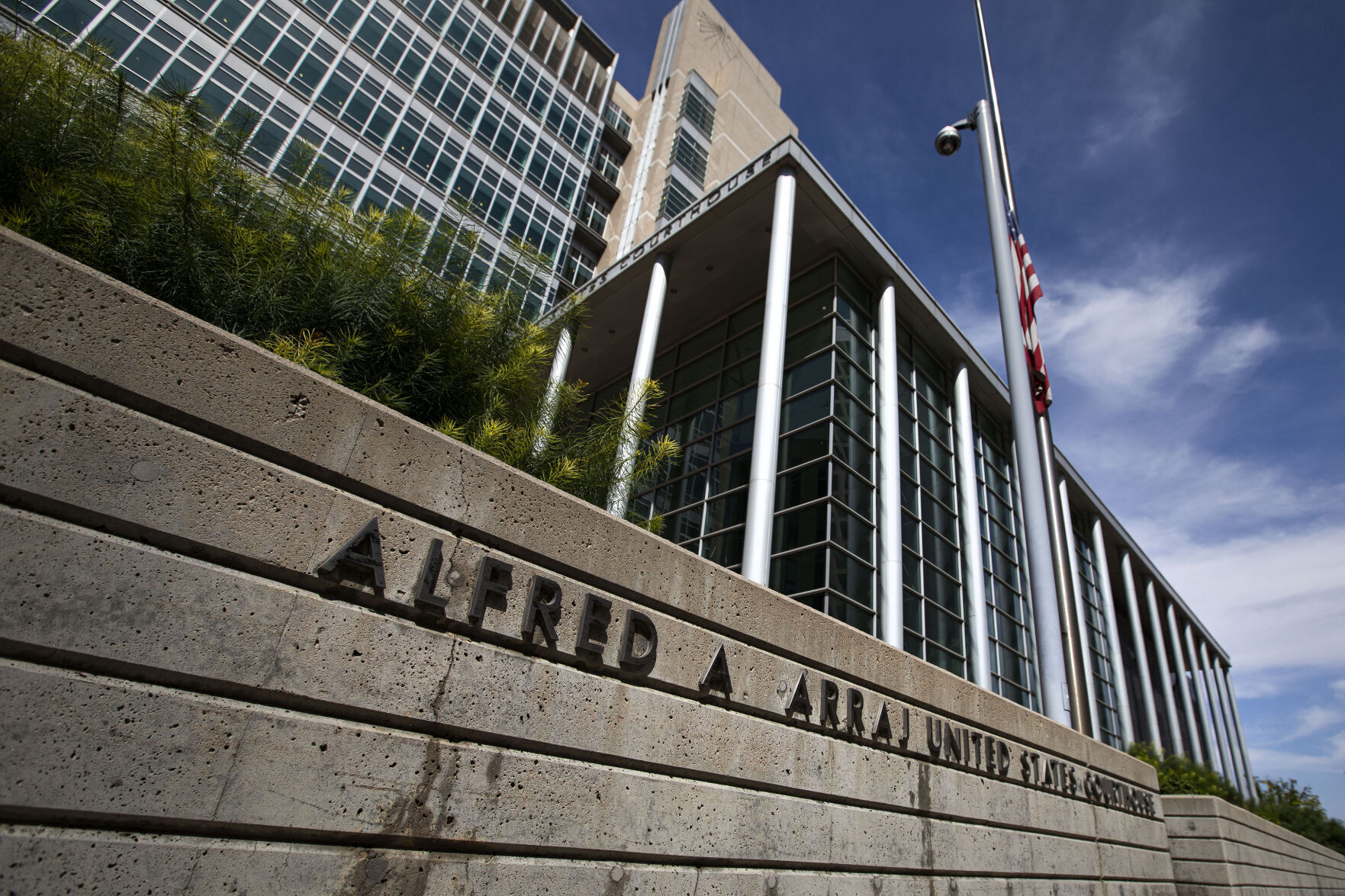
Two of Colorado’s federal judges on Thursday provided a rare behind-the-scenes look at the performance reviews attorneys have given them, including those that are less-than-flattering.
“He looks embarrassing on the bench. Disheveled, disinterested and unprepared,” wrote one lawyer.
“Disheveled?” said the target of the review, U.S. Magistrate Judge N. Reid Neureiter. “Sometimes I ride my bike to work.”
Neureiter and U.S. Magistrate Judge Scott T. Varholak, speaking at the Alfred A. Arraj U.S. Courthouse in downtown Denver, clarified that attorneys’ reviews are not publicly available and their colleagues are entitled to keep their performance evaluations private. However, the two men chose to pull back the curtain on their own evaluations to explain why they adhere to certain courtroom protocols and illustrate how they have changed their approaches in response to criticism.
Varholak addressed a frequent critique from the reviews: Judges are either too lenient or too harsh toward those who fail to follow the rules.
“That is a case I struggle with routinely,” he said, when something is “clearly the attorney’s fault. Do I gut an entire plaintiff’s case and throw it all out based on that?”
In the federal trial courts, district judges are appointed by the president and confirmed by the U.S. Senate. Due to their life tenure, they do not receive performance reviews. The district judges, in turn, hire magistrate judges for eight-year terms through a merit selection process to assist with the work of the court. Magistrate judges can perform most of the tasks of their district counterparts, including handling civil cases on their own.
The public is permitted to comment on a magistrate judge’s impending reappointment. But recently, Colorado’s federal court revived a practice similar to the state’s judiciary of soliciting lawyers’ input about magistrate judges’ performance mid-term.
“One of the things that’s frustrating when you get appointed a magistrate judge – you get two weeks of training,” said Neureiter, who joined the court in 2018. For lawyers who come to the bench and are unfamiliar with certain areas of the law, he said the learning curve is steep.
“I was like, OK, do we get evaluated at some point?” Neureiter said. “Does someone tell us whether we’re doing a good job?”
In the past, there had been a mid-term opportunity to evaluate magistrate judges. The court recently brought that feature back with questionnaires for lawyers to fill out and rate magistrate judges’ performance in categories like legal skills, communication, demeanor, preparedness and docket management.
“We’re really off if every person responding says, ‘This judge falls below average.’ It does give us the opportunity to course correct,” said Varholak, who was appointed in 2016 and is up for reappointment next year. He added that people will generally feel uncomfortable telling a judge candidly what they are doing wrong, but an anonymous survey allows for such feedback.

Varholak recalled his courtroom protocols initially had a three-page limit when the parties to a case wanted to jointly alert him to a dispute over the discovery of evidence. Varholak then learned through his evaluation that attorneys were upset their opposing counsel would take up the entirety of the space. In response, Varholak eliminated the three-page limit.
“I did make that change because I thought it was very fair critique,” he said.
Neureiter read excerpts from several of his own reviews. One attorney told him he was “as incompetent now as when he started,” while another believed he had “grown tremendously.”
Specifically, attorneys claimed Neureiter “often crafts arguments on behalf of pro se (self-represented) litigants they didn’t otherwise raise.”
“Guilty,” said Neureiter. He elaborated that cases featuring a self-represented plaintiff are difficult because the person may have brought a seemingly viable claim under the wrong legal provision, and federal judges are required to give a generous reading to pro se filings.
“It’s hard for me to say, ‘motion to dismiss: granted’ rather than have a dialogue,” he explained. “We’re gonna give them a shot or two and we’re not gonna lead them astray as to whether they have a potentially valid case.”
Varholak added that while he cannot be a pro se litigant’s advocate, his job is to get the law correct. A pro se prisoner, for example, may not know a U.S. Supreme Court or appellate court decision supports their claim, but Varholak said he cannot ignore those sources of law.
He recalled a lawyer who once alleged Varholak was biased because his decision relied on cases that neither side cited.
“If there’s a case that’s clearly on point or that supports which way I think it should come out, I have to rely on it,” he said. With incarcerated plaintiffs, who may only have access to the law through books in a library, “the idea that they’re going to find the most directly on point case, they’re just not. If I had access to what they do, I couldn’t find the most on point case.”
Finally, Neureiter conceded to two valid critiques: First, that he could be rude to attorneys (“The one way to really piss me off – and my colleagues – is to not show up on time”) and second, that he will walk into a hearing having already decided how to rule.
“Somebody might say, ‘That’s inappropriate. The judge has made up his mind.’ Well, I’ve read your briefs. So, I’ve got an idea,” he said.
“I think you want us reading your briefs,” Varholak said. “If we are walking in with absolutely no idea which way we’re leaning – unless it’s really close – it means we’re not that prepared.”
The discussion was sponsored by the Faculty of Federal Advocates.




